Skin fold rash pictures. Comprehensive Guide to Skin Fold Rash: Intertrigo Condition, Treatments and Pictures for Adults
What is intertrigo? How is it caused? What are the symptoms of intertrigo? What are the different types of intertrigo infections? How is intertrigo treated? Find the answers to these questions and more in this detailed guide.
Understanding Intertrigo: The Skin Fold Rash
Intertrigo is an inflammatory skin condition caused by skin-on-skin friction, typically occurring in warm, moist areas of the body. It is characterized by a red or pink skin rash that can be sensitive and painful. Intertrigo often develops in areas where skin folds touch, such as the groin, between the breasts, under the arms, or between the toes.
Causes of Intertrigo
The primary cause of intertrigo is the irritation and friction caused by skin rubbing against skin. This creates a warm, moist environment that is ideal for the overgrowth of microorganisms like yeast, fungi, and bacteria. Certain factors can increase the risk of developing intertrigo, including:

- Weakened immune system
- Excess skin (e.g., in obese individuals)
- Diabetes
- Wearing diapers
- Poor hygiene habits
- Immobility
- Incontinence
- Excessive sweating (hyperhidrosis)
- Malnutrition
- Tight clothing or shoes
- Environments with high heat and humidity
- Wearing a splint, brace, or artificial limb
Symptoms of Intertrigo
The primary symptoms of intertrigo include:
- Reddened skin
- Small bumps or spots in skin folds
- Itchy, uncomfortable, burning, prickly, and painful rash
- Inflammation and rawness of the affected areas
- Cracked, bleeding, oozing, and crusted skin
- Hardened and scaly skin surrounding the rash
- Foul odor (if a secondary infection develops)
The rash is often symmetrical, appearing on both sides of the skin fold, and can worsen if the affected area comes into contact with bodily secretions.
Types of Intertrigo Infections
Intertrigo can be caused by different types of microorganisms, leading to different types of infections:
Candidal Intertrigo
Candidal intertrigo is a secondary intertrigo infection caused by the Candida (yeast) fungus, particularly Candida albicans. This type of intertrigo is characterized by an itchy, bright red, and raw rash.

Bacterial Intertrigo
Bacterial intertrigo is a secondary intertrigo infection caused by bacterial microorganisms, such as Staphylococcus aureus, Proteus mirabilis, Proteus vulgaris, Pseudomonas aeruginosa, and group A beta-hemolytic streptococci.
Viral Intertrigo
Viruses can also affect the area of the body with intertrigo, causing a secondary infection. The most common viruses associated with intertrigo include herpes simplex virus and human papillomavirus (HPV).
Treating Intertrigo
The treatment for intertrigo typically involves a combination of the following approaches:
- Maintaining good hygiene and keeping the affected area clean and dry
- Using over-the-counter antifungal or antibacterial creams or powders
- Prescription antifungal or antibiotic medications, if the condition is more severe
- Addressing any underlying medical conditions that may be contributing to the development of intertrigo
- Avoiding tight-fitting clothing and friction in the affected area
- Using moisture-wicking fabrics and absorbent powders to keep the area dry
In some cases, a secondary infection may require additional treatment, such as prescription antifungal or antibiotic medications.

Preventing Intertrigo
To prevent the development of intertrigo, it’s important to maintain good hygiene, keep skin folds clean and dry, and address any underlying medical conditions that may increase the risk of this skin condition. Some tips for preventing intertrigo include:
- Regularly cleaning and drying skin folds
- Wearing loose-fitting, breathable clothing
- Losing weight if overweight or obese
- Managing diabetes and other medical conditions
- Avoiding excessive sweating and maintaining good personal hygiene
Intertrigo Pictures and Examples
Intertrigo can present in various forms, and the appearance of the rash can vary depending on the underlying cause and any secondary infections. Here are some examples of intertrigo pictures:
- Intertrigo in the groin area, characterized by a red, raw rash
- Intertrigo under the breasts, with a red, moist rash and possible cracked skin
- Intertrigo between the toes, with a scaly, peeling rash
- Intertrigo in the armpits, with a red, inflamed rash and possible oozing
Intertrigo Information & Treatment in Boardman, OH
What Is Intertrigo?
Intertrigo is an inflammatory skin condition caused by skin-on-skin friction, usually occurring in warm, moist areas of the body, including the groin, between folds of skin on the stomach or abdomen, under the breasts, under the arms, or between the toes. Intertriginous zones are areas of skin that touch each other. In individuals with obesity, skin folds may occur in a number of additional body areas, which may all be affected by intertrigo. As a result, the affected skin features a red or pink skin rash, or dermatitis, which may be sensitive or painful. Severe cases of intertrigo can result in skin infection, oozing sores, cracked skin, and bleeding, among other severe symptoms. Other conditions resembling intertrigo include inverse psoriasis, staphylococcal or streptococcal impetigo, familial pemphigus, hidradenitis suppurativa (acne inversa), and seborrheic dermatitis. Though the rash can be itchy or painful, it is not contagious, and bacteria, fungus, and yeast can easily grow in affected areas and worsen the rash.
Though the rash can be itchy or painful, it is not contagious, and bacteria, fungus, and yeast can easily grow in affected areas and worsen the rash.
Symptoms Of Intertrigo
This condition starts with reddened skin, small bumps, or spots in skin folds, creating an intertrigo rash. The rash may feel itchy, uncomfortable, burning, prickly, and painful. The most common areas the rash occurs include between the toes, in the armpits, in the groin area, in the thigh areas, on the underside of the belly or breasts, behind the knees, in front of the elbows, in the crease of the neck, and the skin between the buttocks. Intertrigo usually appears on both sides of the skin fold, similar to a mirror image of the other side. If the rash is not infected, it is often symmetrical. Examples of symmetry include intertrigo appearing under both arms or the folds of both breasts.
Due to the persistent friction, heat, and moisture produced in these areas, the affected areas can quickly become inflamed and raw, causing the skin to crack, bleed, ooze, and crust over. The skin surrounding the rash may become hardened and scaly. Should a secondary infection develop from bacteria, fungus, or yeast, a foul intertrigo smell may develop, and the area may become more inflamed and painful. Secondary infections with intertrigo usually present in an asymmetrical form. You may develop intertrigo in more than one area of the body. Small skin folds, such as those located behind the ears, around the chin, or between the eyelids, can be affected. Symptoms of intertrigo can worsen if the affected area comes into contact with bodily secretions, such as sweat, urine, natural oils, or feces.
The skin surrounding the rash may become hardened and scaly. Should a secondary infection develop from bacteria, fungus, or yeast, a foul intertrigo smell may develop, and the area may become more inflamed and painful. Secondary infections with intertrigo usually present in an asymmetrical form. You may develop intertrigo in more than one area of the body. Small skin folds, such as those located behind the ears, around the chin, or between the eyelids, can be affected. Symptoms of intertrigo can worsen if the affected area comes into contact with bodily secretions, such as sweat, urine, natural oils, or feces.
Intertrigo Causes
The primary cause of intertrigo is irritation caused by skin rubbing against skin. This friction commonly occurs between skin folds, creating a warm, moist environment that lacks exposure to air. This environment then invites an overgrowth of yeast, fungi, bacteria, and other microorganisms to accumulate in the affected area. Anyone can get intertrigo, but the following factors and conditions can increase your risk of developing this skin condition. Infants have a high risk of developing intertrigo because their skin is highly sensitive. Babies and young children also tend to have skin rubbing against other skin, such as in folds of the neck. Babies also often have damp skin from drooling and diapers, increasing their likelihood of developing intertrigo. In some cases, intertrigo occurs as a side effect of chemotherapy treatment.
Anyone can get intertrigo, but the following factors and conditions can increase your risk of developing this skin condition. Infants have a high risk of developing intertrigo because their skin is highly sensitive. Babies and young children also tend to have skin rubbing against other skin, such as in folds of the neck. Babies also often have damp skin from drooling and diapers, increasing their likelihood of developing intertrigo. In some cases, intertrigo occurs as a side effect of chemotherapy treatment.
- Incontinence
- Excessive Sweating (Hyperhidrosis)
- Malnourishment
- Tight Clothing Or Shoes
- Environments With High Heat & Humidity
- Wearing A Splint, Brace, Or Artificial Limb
Fungi
Candidal intertrigo is a secondary intertrigo infection. Candida (a yeast) is the fungus most commonly associated with this condition. Also called Candida albicans, Thrush is the major cause of all skin-related yeast infections. Most individuals have some amount of Candida albicans present on their skin, but the present yeast can multiply and spread, taking advantage of skin folds and other similar areas on the body. A Candida rash is typically itchy and appears bright red and raw.
Candida (a yeast) is the fungus most commonly associated with this condition. Also called Candida albicans, Thrush is the major cause of all skin-related yeast infections. Most individuals have some amount of Candida albicans present on their skin, but the present yeast can multiply and spread, taking advantage of skin folds and other similar areas on the body. A Candida rash is typically itchy and appears bright red and raw.
Bacteria
Bacterial intertrigo is a secondary intertrigo infection occurring when bacterial microorganisms affect areas of the body with intertrigo. Bacteria associated with intertrigo include Staphylococcus aureus, Proteus mirabilis, Proteus vulgaris, Pseudomonas aeruginosa, and group A beta-hemolytic streptococci.
Viruses
Viruses may also affect the area of the body with intertrigo, causing a secondary infection. The most common viruses associated with intertrigo include Poxviridae, Papillomaviridae, Picornaviridae, Retroviridae, Herpesviridae, Togaviridae, and Parvoviridae. Contact us for more information about secondary infections.
Contact us for more information about secondary infections.
Intertrigo Treatment
Treatment is typically straightforward when intertrigo is inflammatory only, mild, and no infection is present. Your Boardman dermatologist will likely tell you to keep the affected area clean, dry, and exposed to air. Your doctor may also prescribe a topical steroid medication and advise you to follow a number of at-home care instructions. They also may recommend you apply an intertrigo treatment cream, such as zinc oxide ointment, petroleum jelly, talcum powder, or aluminum sulfate, to the affected area.
In cases of infected intertrigo or intertrigo in which a secondary infection is present, your doctor may also prescribe additional topical medications. Specific treatment for intertrigo will depend on the cause and the type of infection present. In extreme cases, some individuals undergo breast reduction surgery or gynecomastia surgery to reduce chronic intertrigo. Fungal intertrigo treatments may include topical antifungal medications, a low-dose corticosteroid, or a system antifungal oral medication. Bacterial intertrigo treatments may include topical antibiotics, oral antibiotics, and a low-potency corticosteroid.
Fungal intertrigo treatments may include topical antifungal medications, a low-dose corticosteroid, or a system antifungal oral medication. Bacterial intertrigo treatments may include topical antibiotics, oral antibiotics, and a low-potency corticosteroid.
Intertrigo Home Treatment
The prognosis is quite good for patients willing to alter certain habits that may predispose them to intertrigo. If you are predisposed to getting intertrigo, then you should take precautions and follow these intertrigo home remedies. It is possible to prevent simple intertrigo by applying a lubricating ointment directly into intertriginous skin folds predisposed to irritation, especially before engaging in any type of physical activity. Carefully drying the affected area following bathing, showering or swimming is likewise helpful. In those with obesity and large abdominal skin folds, weight reduction, healthy nutrition, and possible excision surgery may diminish the folds, helping to prevent intertrigo.
- Keep your skin clean and dry. Pat yourself dry whenever you exercise, shower, or bathe. Avoid rubbing your skin. Use products targeted to mitigate the possibility of moisture and infection occurring on the skin, particularly within skin folds.
- Manage your sweat. Certain bodily fluids, such as perspiration, can cause the intertrigo to develop and worsen the condition, potentially leading to an infection. Manage your sweat production by keeping your skin dry. Use a mild antiperspirant to minimize sweating in your skin folds.
- Use antifungal products. For those with fungal infections and intertrigo, try using an antifungal cleanser as soap on the affected area. Consult your doctor for product recommendations.
- Wear loose clothing. Tight, non-breathable fabrics and clothing can cause intertrigo. Wear loose clothing made from cotton and avoid synthetic fabrics and materials.

- Create a physical barrier. Depending on the location of the intertrigo, you may benefit from creating a physical barrier around the affected area. Try using a thin cotton or gauze covering or barrier to separate your skin folds.
Fold Dermatitis in Dogs – Symptoms, Causes, Diagnosis, Treatment, Recovery, Management, Cost
What are Fold Dermatitis?
Fold dermatitis is commonly found in dogs with excess, wrinkly skin and is most often found in the face, lips, vulva, and tail folds. However, fold dermatitis can happen anywhere on your dog’s body where there is wrinkled or extra skin. Acute fold dermatitis is a case that only lasts for a short period of time, but if not treated properly it can become a chronic case which will need more intense treatment.
Fold dermatitis is a common chronic skin disorder that occurs in the folds of skin, especially in breeds with many areas of skin folds and loose skin. This condition occurs due to the moisture and heat that builds up in the folds of skin, which is a perfect breeding ground for all kinds of bacteria and yeast. It is usually more common in the summer when it is hottest and can become bad enough to cause a bad odor and weeping from the area. Because the mouth is constantly moist from saliva, it is common for your dog to have this condition around their lips (lip fold dermatitis).
This condition occurs due to the moisture and heat that builds up in the folds of skin, which is a perfect breeding ground for all kinds of bacteria and yeast. It is usually more common in the summer when it is hottest and can become bad enough to cause a bad odor and weeping from the area. Because the mouth is constantly moist from saliva, it is common for your dog to have this condition around their lips (lip fold dermatitis).
Youtube Play
Symptoms of Fold Dermatitis in Dogs
There are several types of fold dermatitis that each have their own set of symptoms. Some of the most common complaints are:
General Skin Fold Dermatitis
- Moist red areas in folds of skin anywhere on your dog’s body
- Usually affects the face, lips, neck, vulva, and tail folds
- Obese dogs are more at risk
Tail Fold Dermatitis
- Scratching, biting, or rubbing affected areas
- Rubbing behind on carpet or ground
- Excessive licking
Vulvar Fold Dermatitis
- Scooting
- Licking groin area
- Foul odor
- Red irritated skin
- Frequent urinary tract infections
Lip Fold Dermatitis
- Swollen, painful, and bad smelling lips
- Discolored and matted fur on the mouth with chronic lip fold dermatitis
- Scratching and rubbing face
Face Fold Dermatitis
- Painful weeping sores in skin folds
- Damp red areas of irritation
- Blisters or lesions
Types
- Acute cases only last for a short time; days to weeks.

- Chronic cases continue to need treatment for a long time, often over the course of many years.
- Tail fold dermatitis is most common in dogs with short and curly tails such as the Bulldog
- Vulvar fold dermatitis can happen to any female dog of all ages and breeds
- Lip fold dermatitis usually affects dogs with loose, hanging lips such as the Cocker Spaniel
- Face fold dermatitis is common in dogs with wrinkled, loose skin in the face such as the Shar Pei.
Top
Causes of Fold Dermatitis in Dogs
The cause of fold dermatitis varies depending on the type but it is usually a problem with poor ventilation, moisture build up and humidity. Allergies often play a role. Obesity is also considered to be a factor in some cases. Certain breeds are more susceptible, which include:
Allergies often play a role. Obesity is also considered to be a factor in some cases. Certain breeds are more susceptible, which include:
- Basset Hounds
- Bloodhounds
- English Bulldogs
- Pekingese
- Pugs
- Saint Bernards
- Shar Peis
- Shih-Tzus
- Spaniels
Top
Diagnosis of Fold Dermatitis in Dogs
With any visit to see your veterinary professional, you should be prepared to provide your dog’s complete medical history and immunization status, if possible. The veterinarian will need to know if your pet has been on any medication or been ill recently as well. A physical assessment will be done first, to check your dog’s vital signs and overall body condition. In addition, a group of laboratory tests will need to be done which usually includes a complete blood count, biochemical profile, skin swab and scrape.
The veterinarian will need to know if your pet has been on any medication or been ill recently as well. A physical assessment will be done first, to check your dog’s vital signs and overall body condition. In addition, a group of laboratory tests will need to be done which usually includes a complete blood count, biochemical profile, skin swab and scrape.
The veterinarian will examine all of your dog’s irritated areas.
Other diseases and illnesses must be ruled out and your dog should be tested for infections such as pyoderma or impetigo. There is usually no need for x-rays or other imaging in this case unless the veterinarian suspects an internal problem.
Chronic, recurring cases may warrant a biopsy. Some dogs will benefit from allergy testing; either a blood test or intra dermal skin testing.
Top
Treatment of Fold Dermatitis in Dogs
The veterinarian will likely clean the area and apply a cream or ointment to ease the itch, pain, and inflammation. Clipping or shaving the area is also important in keeping the area clean and dry. In severe cases, especially with vulvar, lip or tail fold dermatitis, surgery may be suggested to remove excess skin.
Medication
Hydrocortisone cream, chlorhexidine gluconate wash, and ketoconazole shampoo may be used. Antibacterial ointment, wipes, and shampoos are sometimes prescribed.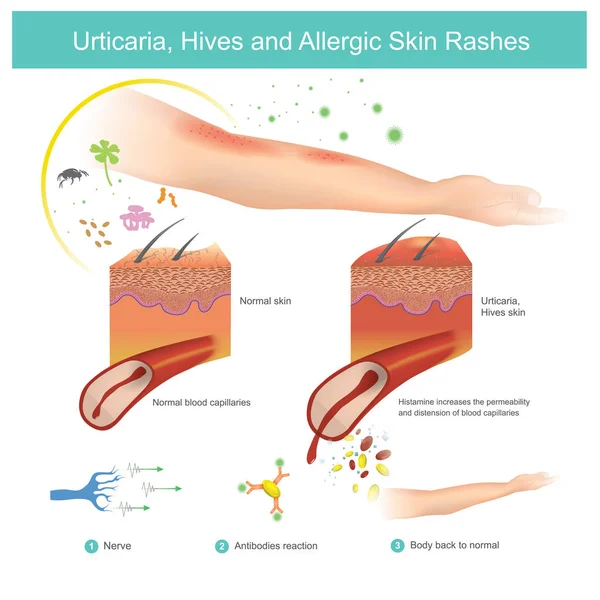 Antibiotics or antifungals are given by mouth or injection to treat infection.
Antibiotics or antifungals are given by mouth or injection to treat infection.
Surgery
In severe cases, the veterinarian may suggest surgery to remove the excess skin folds that are causing the ongoing problem. Vulvar fold dermatitis is sometimes treated with episioplasty, which is a reconstruction of the vulvar area to remove the excess skin. In severe cases of tail fold dermatitis, removal of the tail is suggested to prevent the dermatitis from recurring. In fact, many dogs with excess skin such as Shar Peis and Pugs have to get excess skin folds removed to prevent the recurrence of fold dermatitis. This treatment is usually 100% effective in preventing fold dermatitis.
Top
Worried about the cost of Fold Dermatitis treatment?
Pet Insurance covers the cost of many common pet health conditions.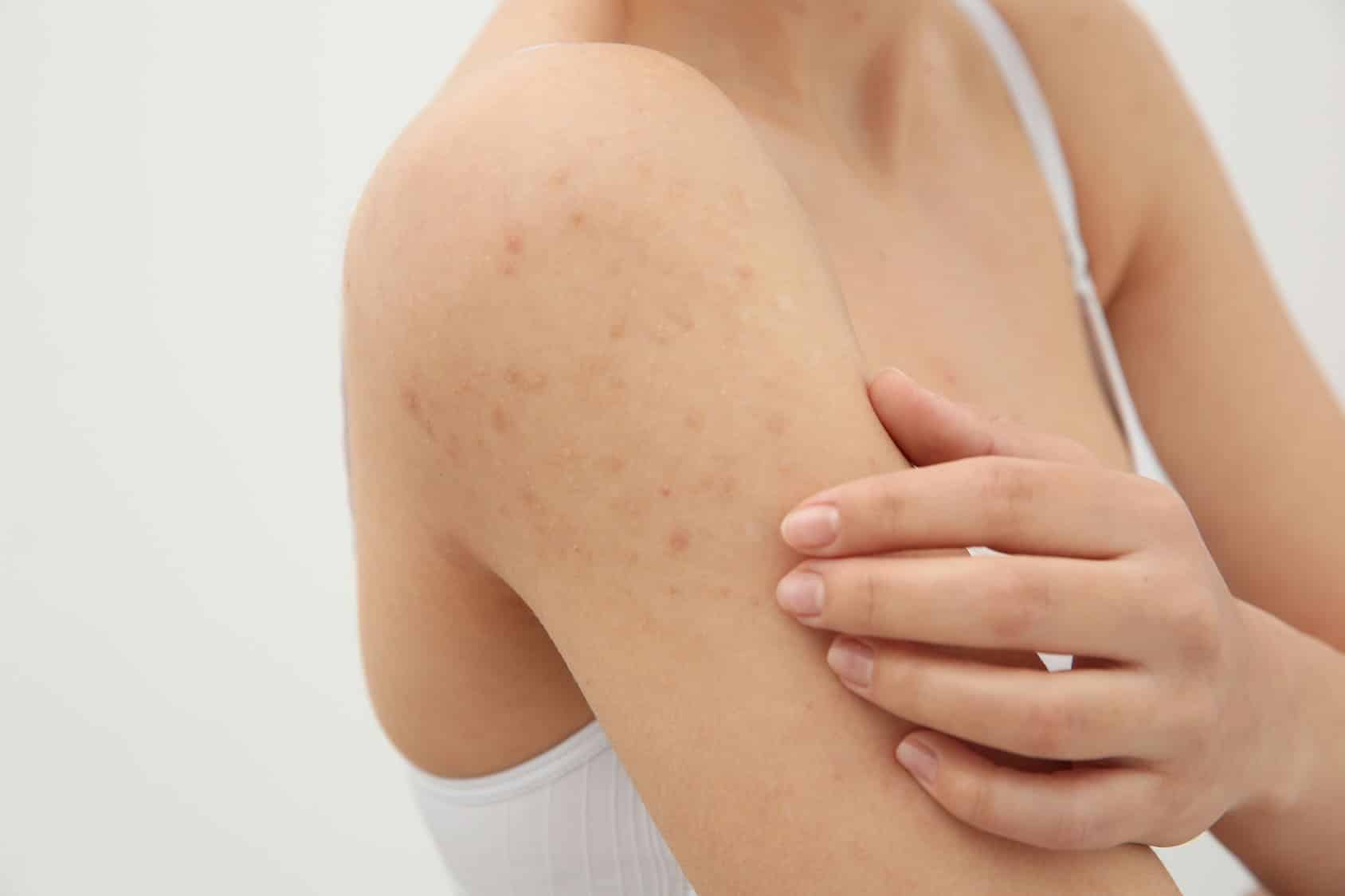 Prepare for the unexpected by getting a quote from top pet insurance providers.
Prepare for the unexpected by getting a quote from top pet insurance providers.
Get a Quote
Recovery of Fold Dermatitis in Dogs
Your dog’s prognosis is good with treatment, no matter which kind of fold dermatitis he has. Unless there is a serious infection caused by the dermatitis, your dog should be completely back to normal in a week or two. If your pet has to have surgery, you will need to keep him on controlled activity for 10-14 days or until the stitches are removed. Cold compresses and pain medication will probably be suggested. Your vet may also want your dog to wear an Elizabethan collar to prevent him from chewing or licking the area.
Top
Skin rash treatment in Krivoy Rog: dermatologist, allergist
- October 02, 2017
How to cure a rash on the face and neck, arms and legs Skin diseases can be temporary, situational, chronic, with complications. The appearance of neoplasms on the skin, and even small pathological elements in the form of acne, scales, vesicles and papules require attention. It is recommended that you seek help if you experience anxiety symptoms. Department of Dermatology: treatment of rashes and allergic rashes in Krivoy Rog on Filatov and Pochtov, consultations of a dermatologist and an allergist!
The appearance of neoplasms on the skin, and even small pathological elements in the form of acne, scales, vesicles and papules require attention. It is recommended that you seek help if you experience anxiety symptoms. Department of Dermatology: treatment of rashes and allergic rashes in Krivoy Rog on Filatov and Pochtov, consultations of a dermatologist and an allergist!
Skin rash, small red rash or whole spots, allergic rash in a child, scab on the head and neck, pimples on the back and shoulders – a sign of the development of a certain disease. We often treat a rash as a simple allergy, believing that it will go away on its own in a couple of days. Interestingly, sometimes this happens, but more often, a rash on the body may well indicate abnormalities in the digestive tract, allergic reactions, and various immune pathologies. Therefore, we recommend that you pay attention if you notice rashes on your skin that cause itching, redness and burning, because ignoring timely treatment can lead to infection and much more complicated consequences!
Types of skin rash
Any rash that appears on the surface of the skin is divided into primary and secondary by specialists.
In turn, primary rashes are more informative for diagnosis:
• Small blisters and larger blisters;
• Pustules and spots;
• Blisters, nodules and large nodes.
They differ in size, shape, contours, internal content, color and shades.
Secondary rashes can appear on the skin against the background of primary rashes, regardless of whether they have been treated or not!
Rash location and variety
• Acne. It appears on the face and neck, back and chest, while representing black dots or painful red pimples. Acne is a disease of the sebaceous glands and is difficult to treat. Acne therapy is long, but in the case of an integrated approach with professional diagnostics, the prospects improve significantly. Used drug treatment of acne, plasmolifting in the treatment of acne, post-acne and scars;
• Hemorrhagic rash. It appears on the popliteal or elbow folds, in the groin area, axillary zones. Hemorrhagic rash can be a manifestation of hemophilia, hemosiderosis, granulomatosis. It requires timely initiation of therapy and strict adherence to the protocol, the recommendations of the dermatologist;
It requires timely initiation of therapy and strict adherence to the protocol, the recommendations of the dermatologist;
• Syphilitic rash. Often, the patient independently comes to the conclusion that pink skin rashes are an allergy, a common dermatitis. A syphilitic rash can last for about 1-2 months, and go away on its own. But this is what will complicate the further treatment of the disease, so do not forget that such manifestations require your attention, as well as a timely visit to a dermatologist;
• Allergic rashes. They can occur on almost any part of the skin, for example, a rash on the abdomen, allergies on the sides and back, and at the same time be accompanied by serious discomfort – burning, itching, peeling of the skin. An allergic rash on the body occurs for a variety of reasons – an allergy to cold, food, any chemicals, cosmetics, drugs, etc.;
• Eruptions on the legs. The rash can be allergic in nature, or it can be a manifestation of a fungal infection.:max_bytes(150000):strip_icc()/GettyImages-1830338421-8b84b36828de4d89a3efbbd451b26557.jpg) If the rash on the thighs, legs and knees spreads, intensifies, and also causes an increase in temperature, we recommend that you urgently contact a specialist to determine the diagnosis. Please note that the rash on the legs itches quite often, which is fraught with trauma to the skin during itching, and infection;
If the rash on the thighs, legs and knees spreads, intensifies, and also causes an increase in temperature, we recommend that you urgently contact a specialist to determine the diagnosis. Please note that the rash on the legs itches quite often, which is fraught with trauma to the skin during itching, and infection;
• Eruptions on the arms. It is likely that this is an allergy to the same food, detergents, cold, synthetic clothing. But serious skin diseases should not be ruled out, because a rash on the elbows and shoulders, abscesses and acne on the hands often appear due to diseases of the internal organs, it can also be a viral, fungal infection of the skin. Correct conclusions can only be made by a doctor!
Meaning of rashes on various parts of the body
Brief information on rashes on the face, limbs and body, as well as their relationship directly with diseases, which may mean a rash on the skin. We do not recommend using for self-diagnosis and photos of skin rashes on the body.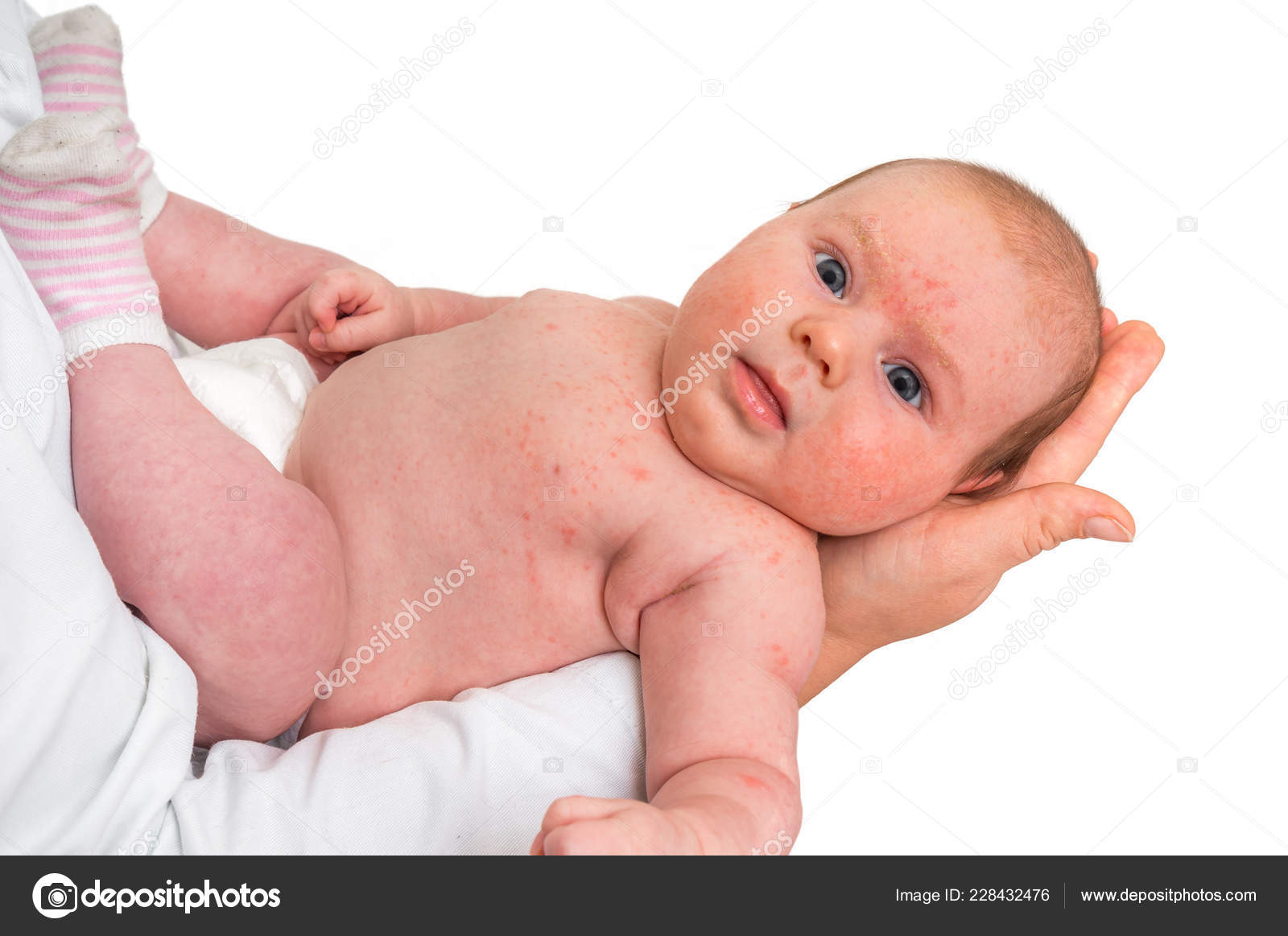 All decisions are made by a specialist in the field of dermatology, an allergist or an infectious disease specialist, who conducts an examination and prescribes additional diagnostic measures, and only according to their results, treatment of a rash, drugs to restore the skin!
All decisions are made by a specialist in the field of dermatology, an allergist or an infectious disease specialist, who conducts an examination and prescribes additional diagnostic measures, and only according to their results, treatment of a rash, drugs to restore the skin!
• Rash on the face of an adult. Allergies, acne, malnutrition, hormonal imbalance. Also, among the causes of a rash on the face of an adult male are irritation after shaving, ingrown hairs;
• Rash on the face of a child – atopic dermatitis, streptoderma, impetigo. Often, a rash on the face in children is an allergy. But also small pimples on the cheeks and near the mouth can mean diathesis, chickenpox, colds and urticaria. Some diseases have an external similarity, but are completely different in nature, so we do not recommend treating the child on their own;
• Body rash in adults – allergic reaction to food, chemical contact dermatitis, fungal infection, measles or chicken pox, vasculitis, insect bites.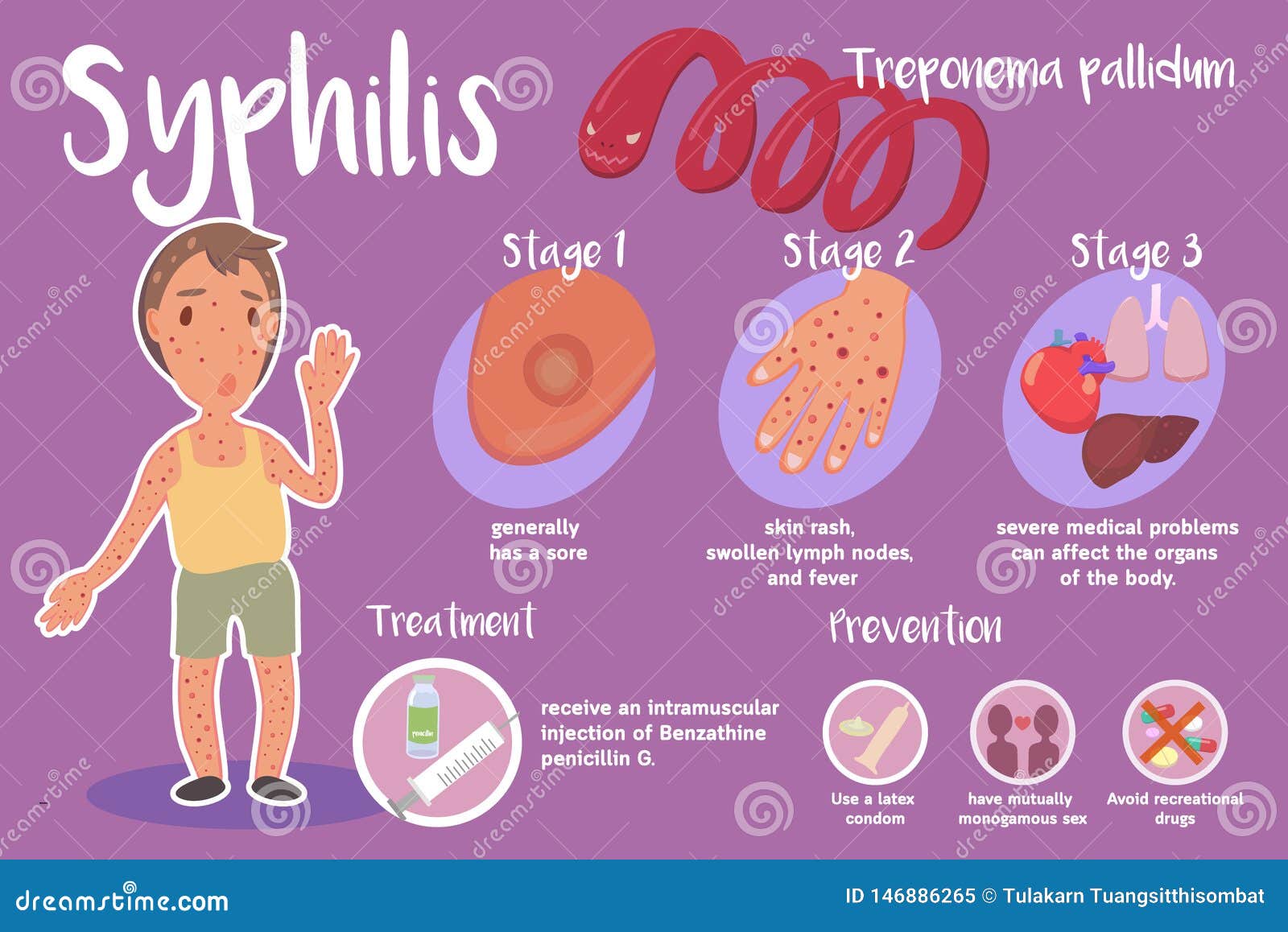 There are several distinguishing features, thanks to which one of dozens of skin diseases can be established. We need diagnostics and tests. In addition, the direct presence of a rash on the body, localization matters. It can be a rash on the neck and back, rashes on the sides, small pimples on the chest;
There are several distinguishing features, thanks to which one of dozens of skin diseases can be established. We need diagnostics and tests. In addition, the direct presence of a rash on the body, localization matters. It can be a rash on the neck and back, rashes on the sides, small pimples on the chest;
• Rash on the body of a child – contact dermatitis, diaper dermatitis, streptoderma, measles or jaundice, urticaria. One of the causes of rashes on the body in children is scabies, but scarlet fever and chickenpox are also diagnosed. It is worth paying attention to the danger of such reactions on the skin of a child, even if you find redness and diaper rash in the folds of the skin, on the flexion surfaces, pimples in the perineum, on the arms and legs. It will not work to identify diseases on your own, even if you look at a photo of a rash and make a comparison. It is important to consult a doctor in time;
Localization of skin rashes and significance • Rash on the body and red spots – contact dermatitis, eczema, psoriasis, lichen, depending on additional data. An important role is played by the exact color of the spots, the classification of the rash on the body, the size, localization, additional characteristics;
An important role is played by the exact color of the spots, the classification of the rash on the body, the size, localization, additional characteristics;
• Rash on hands and feet, spots, erythema – psoriasis, allergic reactions, intestinal infections, fungal and viral skin lesions. Differential diagnosis is important, since silver-red spots and rashes on the knees and elbows are psoriasis, in most cases, and a red rash on the body that itches is lichen planus, urticaria, allergies;
• Rashes on the genitals, rash around the anus, in the groin – fungal infections, sexually transmitted diseases, allergies to household chemicals or contraception. Rashes on the skin in the groin often indicate a parasitic effect, and during the diagnosis, pubic lice are found!
It is important to note the additional type of rash. This is the so-called stress on the skin, stress rash, nervous rash, urticaria on the background of nervous disorders. It should be considered as a separate type of rash due to nervous disorders and shocks, to which the vessels react.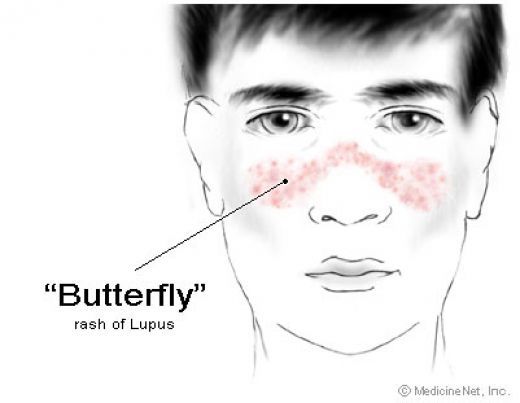 Nerve spots on the skin, photos of which are numerously presented on the network in the form of red spots, purple stripes and purple dots, may indicate an inadequate response of the body to certain stimuli due to immune dysfunction. Nervous allergies and the spots that arise as a result of its appearance are known to specialists. Therefore, if there are such inexplicable symptoms on the skin of the trunk, arms and legs, it is important to ask a dermatologist or allergist a question!
Nerve spots on the skin, photos of which are numerously presented on the network in the form of red spots, purple stripes and purple dots, may indicate an inadequate response of the body to certain stimuli due to immune dysfunction. Nervous allergies and the spots that arise as a result of its appearance are known to specialists. Therefore, if there are such inexplicable symptoms on the skin of the trunk, arms and legs, it is important to ask a dermatologist or allergist a question!
Diagnosis of skin rashes
In fact, most skin reactions or diseases present are very similar. Rashes on the body, irritated skin, small or larger blisters, itching, sometimes burning. Therefore, it is quite difficult to independently determine a dermatological disease or an allergic reaction, a fungal or bacterial lesion, which rash appeared on the arms, back or cheeks. It is required to contact a dermatologist, undergo an examination and pass tests, and only on the basis of the data obtained, proceed to treatment.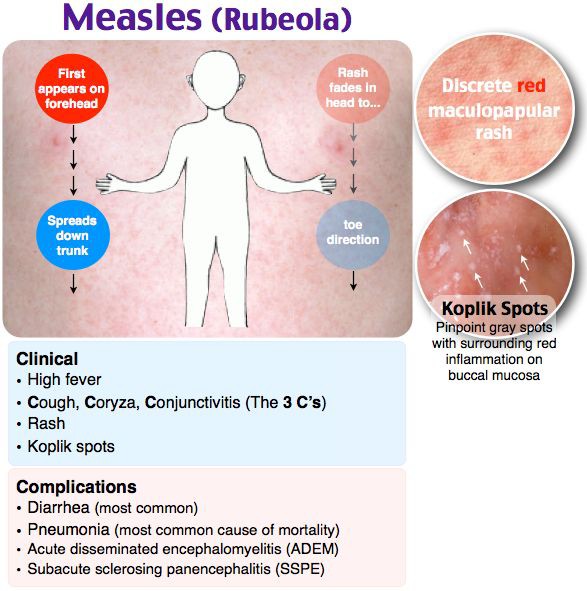 External examination, laboratory tests of scrapings, dermatoscopy to study the structure of neoplasms are necessary!
External examination, laboratory tests of scrapings, dermatoscopy to study the structure of neoplasms are necessary!
Sometimes a doctor can diagnose a disease at a glance. But in case of doubt, the diagnosis should be confirmed. Some skin rashes are very similar, but can mean different pathologies.
Tests for skin rash may vary depending on the opinion of the doctor after the initial examination, when there are results of visual examination and hardware diagnostics. More often, the following tests are included in the list of mandatory laboratory tests:
• Complete blood count with ESR, leukocyte count and eosinophil level to understand the cause of a skin rash – infection, allergy, etc.;
• Sowing from the nasopharynx, analysis of discharge – determination of the cause of urticaria;
• Immune status – detection of antibodies in inflammation and infectious process to be able to determine why a rash appeared on the arm, shoulders, chest and other areas;
• Allergopanel for rashes on the body – detection of allergic reactions;
• Bacteriological examination, skin swab – determination of the types and forms of microorganisms present;
• Glucose analysis for rashes on the body – determination of glucose levels and the effect of deviations on the skin condition, antibacterial properties;
• Hormonal panel, FSH and LH, testosterone – to understand the effect of hormones on skin rashes!
Intestinal microflora examination, thyroid hormone tests, liver complex are also prescribed. Often, the cause of a rash on the skin is helminths, so a fecal analysis may be prescribed!
Often, the cause of a rash on the skin is helminths, so a fecal analysis may be prescribed!
Rashes on the face, photos of which you are ready to view on websites and forums, rashes on the arms and legs, acne on the face and pimples under the hair, other elements of the rash cannot be diagnosed independently. To determine the cause and prescribe the correct treatment for rashes, irritation and possible formations on the surface of the skin, doctors use a whole diagnostic complex. And such measures exist for a reason!
Skin rash treatment in Krivoy Rog
What to do if the skin on the back and sides itches, you notice peeling on the cheeks and neck, these symptoms intersect with hyperemia and distinct rashes, pimples and sores on the surface of the skin? How to act if a rash appears on the body in spring and autumn, how to treat the body’s reactions to weather changes? There are many similar questions, and a person tries to find an answer to any of them on his own. And that is precisely what is wrong. Symptoms overlap, and a banal allergic rash can look like a persistent dermatological disease, atopic dermatitis, or lichen. The dermatologist determines the disease, which prescribes the treatment!
And that is precisely what is wrong. Symptoms overlap, and a banal allergic rash can look like a persistent dermatological disease, atopic dermatitis, or lichen. The dermatologist determines the disease, which prescribes the treatment!
For the treatment of a rash on the body , the clinical picture of the disease, tests, and the results of an external examination are studied. After receiving an accurate diagnosis, treatment of the skin reaction is prescribed, strictly in accordance with the established disease, taking into account individual factors of the course and symptoms of manifestation.
Based on the etiology, the dermatologist prescribes drug therapy – antifungal, antihistamines, anti-inflammatory and hormonal agents. Depending on the condition of the skin, external healing agents and regulators of the functioning of the sweat and sebaceous glands are recommended. Vitamins, immunomodulators, diet therapy are prescribed.
An important aspect of the treatment of a rash on the back, abdomen and neck, rashes on the arms and legs is the identification of a possible underlying disease of the internal organs, the symptom of which is just a rash on the body, as well as the development of a treatment regimen for a directly identified pathology!
Why you can’t treat a skin rash at home
In most cases, after receiving a diagnosis, a person already begins treatment of a rash on the body at home. But his decisions are not independent, but are based on the diagnosis and opinion of the doctor who examined, studied the problem, confirmed the diagnosis with laboratory tests and with the help of hardware dermatoscopy. The point is that you cannot rely only on your own decisions and information received from outside. There are several significant reasons for this:0010 • Skin rashes, photos of which you see on websites, do not always match. You need to understand that there are information portals for which the strict correspondence of photographs of skin diseases is not important. The main thing is to provide information and attract people, increase the number of views;
But his decisions are not independent, but are based on the diagnosis and opinion of the doctor who examined, studied the problem, confirmed the diagnosis with laboratory tests and with the help of hardware dermatoscopy. The point is that you cannot rely only on your own decisions and information received from outside. There are several significant reasons for this:0010 • Skin rashes, photos of which you see on websites, do not always match. You need to understand that there are information portals for which the strict correspondence of photographs of skin diseases is not important. The main thing is to provide information and attract people, increase the number of views;
• Skin rashes with photos and names, descriptions and even infographics that are easy to study is also not the most accurate method for determining dermatological pathology. Experts have confirmed that errors can be made on a number of signs and external parameters. For a person without medical education, allergies and urticaria, eczema and psoriasis, as well as diaper dermatitis and atopic dermatitis, can be completely identical visually.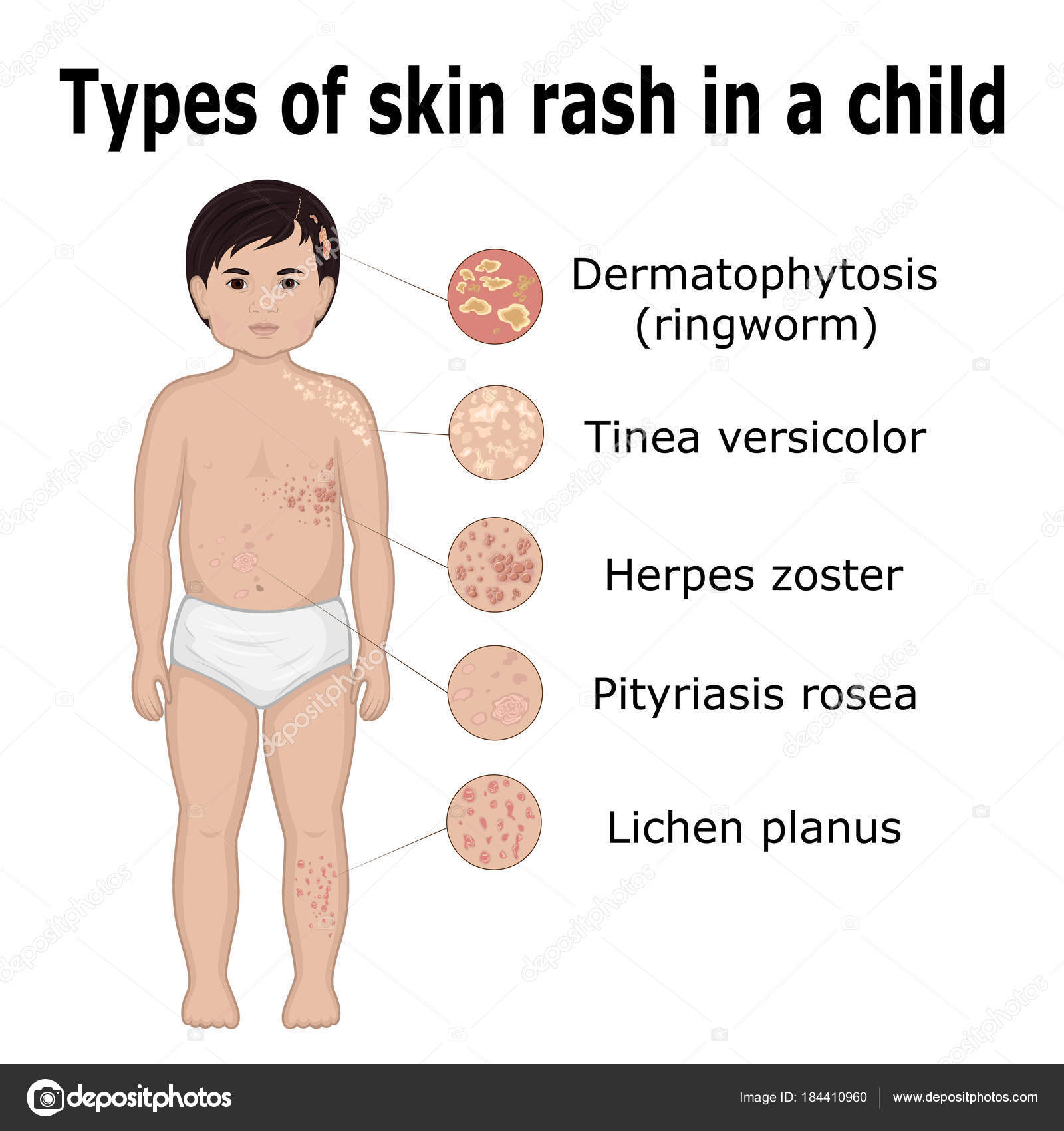 But the treatment of these diseases is different;
But the treatment of these diseases is different;
• Incorrect selection of a skin rash remedy can cause an adverse reaction. And this is the most important reason to refuse self-treatment. You have studied skin rashes with redness and peeling of the skin, for example, a rash on the arms or legs, a rash in a child on the stomach or back, and made a decision. Bought a cream or ointment, and apply it for several days. But treatment without a diagnosis is a huge chance for developing contact dermatitis when the components of a child’s rash remedy are not suitable for his skin. Drug-induced dermatitis is an equally serious problem. The result is an allergy, skin peeling, profuse redness, and now it is definitely necessary to diagnose and resume therapy, but with the right approach!
Mediton Clinic specializes in skin diseases and successfully treats them using only the most effective modern techniques. Make an appointment, tell the doctor about the manifestations of rashes, your own observations, take tests, and you will receive an accurate diagnosis and all the necessary recommendations for treating a rash in a newborn, an older child, an adult!
Treatment of skin rash in children and adults Treatment of rash on the body in Krivoy Rog: measles, chickenpox, urticaria, allergic reactions, dermatitis – together we will cope with any ailment. If you find rashes on your arms and legs, a rash on your child’s cheeks or neck, come and we will definitely solve the problem positively. Dermatology on Postal and Filatov, phone number for appointment: (098) 530-60-40!
If you find rashes on your arms and legs, a rash on your child’s cheeks or neck, come and we will definitely solve the problem positively. Dermatology on Postal and Filatov, phone number for appointment: (098) 530-60-40!
Please read:
Removal of skin lesions
Diagnosis of skin lesions – dermatoscopy
PDT treatment – photodynamic therapy
Good to know
HomeGood to knowGood to know
Anxiety, resistance, exhaustion. Medical psychologist NMIC Kristina Kondratieva talks about burnout of medical workers
Views: 79
especially in such a traumatic system for the human psyche as oncology. permanent
interaction with other people in an emergency situation
cancer, inevitably affects doctors and nurses themselves.
More
What is an immune status test and what treatment can be prescribed based on its results?
Viewings: 587
Almost all cancer patients have some kind of immunity disorders, oncoimmunologists of the N. N. N.N. Petrov based on the results of research they have been doing since 1997.
N. N.N. Petrov based on the results of research they have been doing since 1997.
More
Why are mutations in the BRCA1 and BRCA2 genes determined? What is the best diagnostic method?
Viewings: 3261
The BRCA1 and BRCA2 genes carry information about proteins that are able to repair DNA double-strand breaks. If one of the genes is damaged by a mutation (the DNA sequence changes), then a non-functioning protein is synthesized in the cells.
More
Hormone dependent breast cancer: diagnosis and treatment
Views: 12371
The most common cancer diagnosis in women worldwide is breast cancer. Every year in Russia this disease is diagnosed in 50 thousand people.
More
What is cancer and how not to miss it? What is cancer and how not to miss it? N. N. Petrova.
N. Petrova.
More
Triple-negative breast cancer: features of the disease and treatment options two million people.
More
What is cytokine therapy, in what cases is it used?
Viewings: 18304
Aleksey Viktorovich Novik, oncologist, oncoimmunologist, chemotherapist, N.N. N.N. Petrova, candidate of medical sciences
More
Bacteriological examination of urine
Viewings: 4403
Microorganisms that enter the urine multiply rapidly, and an inflammatory process occurs. If a urinary tract infection (UTI) is suspected, to diagnose and monitor its course, as well as to evaluate the effectiveness of treatment, the patient is offered to conduct a bacteriological study of urine.
More
What does a urinalysis say?
Viewings: 54919
Urinalysis is used not only to detect pathology in the urinary system, but also to assess the state of the body as a whole, using immunological, bacteriological, molecular biological, immunochromatographic and many other research methods. Among the variety of methods, perhaps the most popular is the general analysis of urine.
More
Complications of antitumor drug treatment: skin toxicity
Views: 36200
Skin toxicity is the result of the toxic effect of drugs on rapidly dividing cells, which, in addition to tumor cells, also include cells of the skin and its appendages.
More
Skin cancer: prevention, diagnosis, treatment
Views: 236759
Skin cancer rarely occurs from scratch. Precancerous conditions (precursors of cancer) due to a combination of adverse factors can pathologically change, become malignant: actinic keratosis, skin horn, trophic ulcers, keratoacanthoma.
Precancerous conditions (precursors of cancer) due to a combination of adverse factors can pathologically change, become malignant: actinic keratosis, skin horn, trophic ulcers, keratoacanthoma.
More
What does the general (clinical) blood test say?
Viewings: 66669
Blood tests are perhaps the most frequently performed tests. It is an integral element of any examination, both at the stage of diagnosis and during treatment. What do the indicators of the general blood test mean?
More
What does the coagulogram tell about?
Viewings: 17801
This analysis with a hard-to-pronounce name is mandatory for hospitalization in an oncological hospital. What does the coagulogram show, what do the numerous abbreviations mean?
More
Features of vaccination of cancer patients: recommendations for children and adults
Viewings: 18080
Is it possible to get vaccinated in oncology? Natalya Alexandrovna Efremova, oncologist, researcher at the Scientific Department of Oncoimmunology, N. N. N.N. Petrova, answered a number of important questions about the vaccination of cancer patients.
N. N.N. Petrova, answered a number of important questions about the vaccination of cancer patients.
More
What is a tracheostomy and how can I take care of it at home?
Viewings: 77057
Olga Sergeevna Korneeva, Nurse of the Head and Neck Tumor Department, N.N. N.N. Petrova, spoke about the important rules for self-care for a tracheostomy and the tools and devices necessary for this.
More
Cancer at a young age: has the incidence increased?
Views: 17666
Let’s find out why this is not so, together with Anna Nikolaevna Malkova, head of the information service and telemedicine technology department of the N.N. N.N. Petrova
More
Can cancer be cured?
Viewings: 82975
Can cancer be cured or is it a deadly disease, is it possible to get rid of the diagnosis forever?
More
Protecting a doctor from slander and insult Medical lawyer Natalya Kosolapova told how to punish an offender
Viewings: 4625
Professional medical activity is associated with constant communication with patients.


